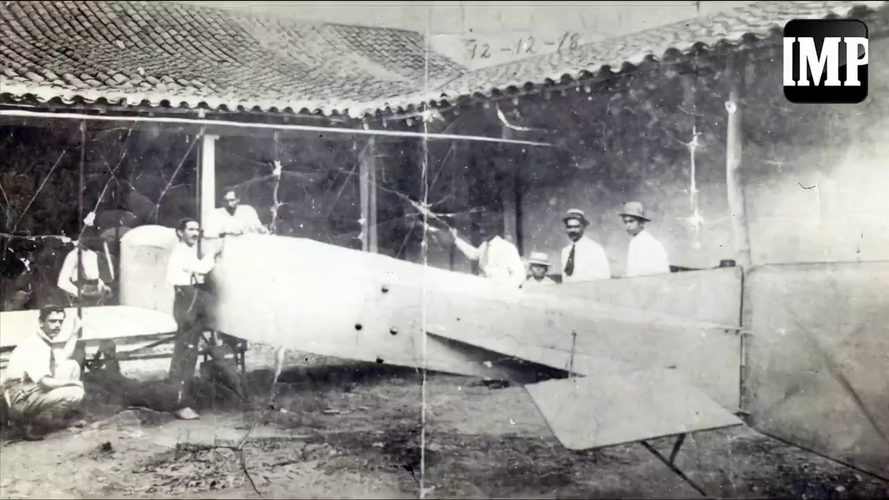AirAusquin
Aeronautical Engineer and civil aviation historian
Hello pals, I am trying to find the source of inspiration for this Venezuelan biplane shown in the picture "built by (Manuel Anzola) and designed according to model 11, which was one of the most modern". Before the picture, that was originally attributed to another local builder in 1920, I was assuming I was built following the Bleriot XI lines, but now, the only other "11" of that time would have been the Nieuport 11 Baby. Do you have any idea of another "model 11" of the period with those lines, specially looking at the tail??? This was the first attempt to built an aeroplane in Venezuela.

The only info I have on the plane and his designer comes from a 1992's book by Alfredo Velez "Vuelo hacia el pasado":
In an article published on April 10, 1917, entitled “Aviation in Barquisimeto,” one could read: “For several days, through conscientious work, Mr. Manuel Anzola has been building an airplane with appropriate wood, brought especially from the mountains of the Quibor District. Mr. Anzola has shown us almost all the parts of the device, built by himself and designed according to model 11, which was one of the most modern. Among the parts already finished we have seen a wing of the mechanical bird, which measures about seven meters in length.” “Once the device is finished, friend Anzola will surely encounter the difficulty of obtaining an engine, and it is then that the protection of all the people of Lara will not be lacking, for the happy completion of this work that will mark an era in the annals of Venezuelan aviation, and since young Anzola is a gifted mechanic, who has devoted himself with tenacity to the study of this science, it is not risky to predict a good success for him in the risky enterprise that he has started.”
The “Current News Note” of August 27, 1917, entitled “The Aeroplane,” could be read: “Manuel Anzola works in his mechanical workshop, intelligent and eager, with unwavering faith in success, in the construction of the monoplane, and overcoming difficulties and jumping obstacles, Anzola's grand vision is going to become a reality.”
In an article dated January 4, 1918, titled “Aviation in Lara,” one could read: “Mr. V. Pinto Arce, Chilean engineer and aviator, and the industrious mechanic from Lara, Manuel Anzola, the latter inventor of an airplane model that he has almost built and recently perfected with the consent and direction of the former” … “have had the spontaneous collaboration of the citizens of Barquisimeto to finance the engine, whose approximate value is Bs. 4,500, and they wish that the city of Carora also help them voluntarily with a subscription for the completion of the device, which will be built in 25 days, in order to be able to continue the work that Mr. Anzola lacks, as laborious as it is contracted. Gen. Froilán R. Álvarez, Dr. J. M. Zubillaga Perera and José Herrera Oropeza were commissioned to collect the funds in the city of Carora. They will continue their tour of El Tocuyo to raise funds.”
It is understood that they never buyed the engine, nevertheless, the military government would have never allow them to fly the plane anyway.

The only info I have on the plane and his designer comes from a 1992's book by Alfredo Velez "Vuelo hacia el pasado":
In an article published on April 10, 1917, entitled “Aviation in Barquisimeto,” one could read: “For several days, through conscientious work, Mr. Manuel Anzola has been building an airplane with appropriate wood, brought especially from the mountains of the Quibor District. Mr. Anzola has shown us almost all the parts of the device, built by himself and designed according to model 11, which was one of the most modern. Among the parts already finished we have seen a wing of the mechanical bird, which measures about seven meters in length.” “Once the device is finished, friend Anzola will surely encounter the difficulty of obtaining an engine, and it is then that the protection of all the people of Lara will not be lacking, for the happy completion of this work that will mark an era in the annals of Venezuelan aviation, and since young Anzola is a gifted mechanic, who has devoted himself with tenacity to the study of this science, it is not risky to predict a good success for him in the risky enterprise that he has started.”
The “Current News Note” of August 27, 1917, entitled “The Aeroplane,” could be read: “Manuel Anzola works in his mechanical workshop, intelligent and eager, with unwavering faith in success, in the construction of the monoplane, and overcoming difficulties and jumping obstacles, Anzola's grand vision is going to become a reality.”
In an article dated January 4, 1918, titled “Aviation in Lara,” one could read: “Mr. V. Pinto Arce, Chilean engineer and aviator, and the industrious mechanic from Lara, Manuel Anzola, the latter inventor of an airplane model that he has almost built and recently perfected with the consent and direction of the former” … “have had the spontaneous collaboration of the citizens of Barquisimeto to finance the engine, whose approximate value is Bs. 4,500, and they wish that the city of Carora also help them voluntarily with a subscription for the completion of the device, which will be built in 25 days, in order to be able to continue the work that Mr. Anzola lacks, as laborious as it is contracted. Gen. Froilán R. Álvarez, Dr. J. M. Zubillaga Perera and José Herrera Oropeza were commissioned to collect the funds in the city of Carora. They will continue their tour of El Tocuyo to raise funds.”
It is understood that they never buyed the engine, nevertheless, the military government would have never allow them to fly the plane anyway.
